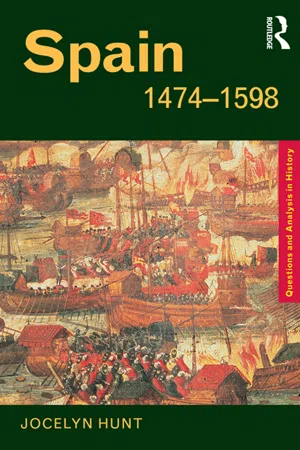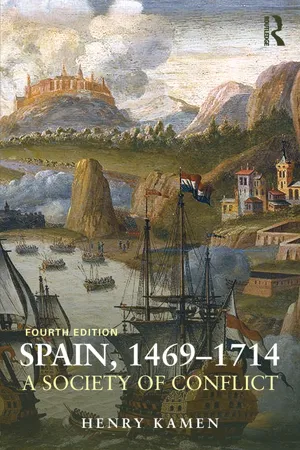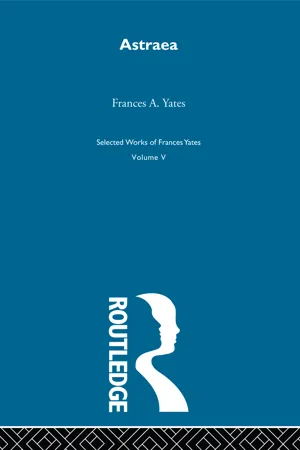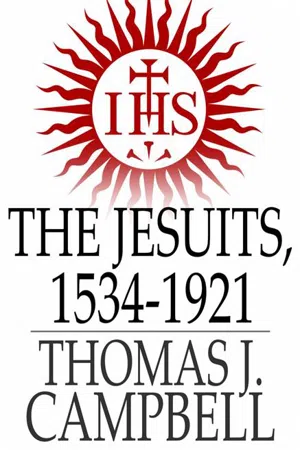Charles I of Spain
Charles I of Spain, also known as Charles V, was a powerful ruler who inherited the Spanish crown in 1516. He expanded his empire through marriage and conquest, ruling over territories in Europe, the Americas, and Asia. His reign was marked by religious conflict, including the Protestant Reformation, and he abdicated in 1556, dividing his empire between his son and brother.
6 Key excerpts on "Charles I of Spain"
- eBook - ePub
- Charles Chapman(Author)
- 2017(Publication Date)
- Jovian Press(Publisher)
...CHAPTER XXII Charles I of Spain, 1516-1556 ~ F ROM THE STANDPOINT OF EUROPEAN history the period of the House of Hapsburg, or Austria, covering nearly two centuries, when Spain was one of the great powers of the world, should be replete with the details of Spanish intervention in European affairs. The purposes of the present work will be served, however, by a comparatively brief treatment of this phase of Spanish history; indeed, the central idea underlying it reduces itself to this: Spain wasted her energies and expended her wealth in a fruitless attempt, first to become the dominant power in Europe, and later to maintain possessions in Italy and the Low Countries which were productive only of trouble; what she took from the Americas with the one hand, she squandered in Europe with the other. Internally there were changes which were to react on the Spanish colonial dominions, wherefore a correspondingly greater space must be accorded peninsula history than directly to the wars in Europe. The greatest feature of the period was the conquest of the Americas, accomplished in part by the spectacular expeditions of the conquistadores, or conquerors, and in part by the slower advance of the Spanish settlers, pushing onward the frontier of profits. Not only was this the most notable achievement when considered from the American angle, but it was, also, when taken from the standpoint of Spain, and possibly, too, from that of Europe and the world. The Italian venture of the Aragonese kings had yielded probably more of advantage than of harm down to the time of Ferdinand, and it may be that even he did not overstep the bounds of prudence in his ambitious designs. When his policies were continued, however, in the person of Charles I, better known by his imperial title as the Emperor Charles V, the results were to prove more disastrous to Spain than beneficial. The circumstances were in fact different for the two monarchs, although their aims were much the same...
- eBook - ePub
- William Maltby(Author)
- 2008(Publication Date)
- Bloomsbury Academic(Publisher)
...By this time Chièvres had died. Charles then showed that, left to his own devices, he could be a masterful politician. His settlement of the revolt balanced conciliation with judicial force, and from that time forward Castile became the most loyal of his kingdoms. The concerns of the rebels, however, had been justified. The inheritance of Charles V, as he is now called out of deference to the imperial title, drew the Spanish kingdoms into a host of entanglements on the continent of Europe. THE EUROPEAN EMPIRE OF CHARLES V Charles now ruled the Netherlands, Spain, the Aragonese kingdoms in Italy, and the German Empire. The union of these polities was, and would remain, entirely personal until his death. Their individual constitutions, and Charles’s place within them, varied enormously, as did their ability to generate revenues for projects beyond their own immediate needs. The European empire of Charles V was not, in other words, a Spanish empire in the constitutional sense, but by the end of his reign Spain would become the dominant power within it. A brief description of the empire’s major components suggests the reasons for this development. The Holy Roman Empire, from which Charles derived his imperial title, was not a kingdom, but a federation of more than 200 princely states and free cities, most of whom pursued their own policies with little regard for the emperor. The larger principalities resembled the monarchies of Western Europe with their own chanceries and representative institutions. Some of the lesser princes survived by acting as military contractors, selling their service to the highest bidders. More than 80 imperial cities had achieved virtual self-government in the period of imperial disintegration after 1250, and many possessed their own militias. In theory, the emperor was supposed to determine foreign policy and serve as the empire’s military leader...
- eBook - ePub
- Jocelyn Hunt(Author)
- 2015(Publication Date)
- Routledge(Publisher)
...4 CHARLES I AS RULER OF SPAIN BACKGROUND NARRATIVE When Ferdinand died, in February 1516, Charles was in his duchy of Burgundy, of which he had been ruler since his father’s death in 1506. He did not arrive in Spain until the September of 1517. In the interval, Archbishop Ximenez de Cisneros held his throne secure for him: but there were many who wanted Charles’ brother Ferdinand, Spanish by upbringing, and with no ties elsewhere, to take the throne. It is ironic that, in the event, Ferdinand was to become ruler of the Habsburg lands in Germany, and leave Castile. Charles made a poor impression when he arrived, with his protruding Habsburg jaw, surrounded by his Flemish courtiers, and unable to speak Castilian. The Cortes of Castile, meeting at Toledo showed extreme reluctance to hand over full power to this young representative of a foreign dynasty. In the event, equally suspicious of Ferdinand, they declared Charles and his mother Joanna to be joint-sovereigns. In practice the Queen was kept secluded in Tordesillas – perhaps with good reason, considering her unstable temperament – for the rest of her life, which lasted almost as long as her son’s reign. Charles left Spain in May 1520, following the death of his grandfather Maximilian, in order to ensure his election as Holy Roman Emperor (as Charles V) and did not return until the summer of 1522. His absence was marked by the Revolt of the Comuñeros, a rising of townspeople with long-standing grievances exacerbated by the departure of the King. Only with difficulty did royal troops eventually suppress the rebellion, but Charles found Spain at peace on his return. The next seven years were to be spent based in Spain, perhaps because Charles had recognised that the comuñeros ’ grievances must be addressed. During these years he married Isabella of Portugal. This marriage, and the birth of his son and heir in May 1527, pleased his Spanish subjects...
- eBook - ePub
Spain, 1469-1714
A Society of Conflict
- Henry Kamen(Author)
- 2014(Publication Date)
- Routledge(Publisher)
...2 The rise of empire Charles V 1516–1558 King and emperor 1516–58 The son born to princess Juana of Spain and Philip the Fair in Ghent in February 1500 was named Charles after his great-grandfather Charles the Bold, duke of Burgundy. His paternal grandfather was the emperor Maximilian of Habsburg, his maternal grandparents were Ferdinand and Isabella of Spain: it seemed likely in consequence that he would one day inherit both Spain and the Habsburg lands. Charles spent his entire childhood in the Netherlands, as did three of his sisters (Eleanor, Isabel and Mary); the other two children of Juana, Ferdinand and Catherine, were born and raised in Castile. When Juana went to Castile to take up her inheritance in 1506, she left her young son behind in the charge of his aunt, Margaret of Austria, who took care of his upbringing and supplied him with tutors. Portraits of the young prince show him to be thin, sickly-looking, and somewhat ugly, with a prominent nose and a heavy lower jaw – characteristic of the Habsburg family – that protruded slightly so that his teeth did not meet exactly and caused some inconvenience when eating. In the genial atmosphere of the Burgundian court at Brussels, Charles was brought up as a Renaissance prince. Alternating with the pleasures of chivalry and the chase, he was given a solid grounding in statecraft and piety under the guidance of Adrian of Utrecht, an adept of the mystical school known as the ‘devotio moderna’. From 1509 his tutor was Guillaume de Croÿ, lord of Chièvres, who kept a firm hand over his charge. Although Charles was not without talent (in languages, for example, he was brought up to speak only French, Flemish and Latin, but soon added Spanish and a smattering of German), he relied heavily on his advisers in his early years. Shortly after the death of Ferdinand the Catholic in 1516, Charles was proclaimed in Brussels as ruler, jointly with his mother, of Castile and Aragon...
- eBook - ePub
- Frances A. Yates(Author)
- 2013(Publication Date)
- Routledge(Publisher)
...PART I CHARLES V AND THE IDEA OF THE EMPIRE In the middle of the sixteenth century, the Holy Roman Empire, which had seemed to be dwindling more and more rapidly into a local German concern, suddenly takes on once more something of its old significance. The century in which a new Europe, with its great states built up on principles of realistic statecraft and infused with national patriotism, was in process of formation saw also a late manifestation of the Monarch, the potential Lord of the World, in the person of the Emperor Charles V. The patterns of the new Europe take their shape under the shadow, or the mirage, of a recrudescence of the idea of the Empire. The revival of imperialism in Charles V was a phantom revival. That he looked so much like a Lord of the World was due to the Hapsburg dynastic marriage policy which had brought such vast territories under his rule, and when, after his death, Phillip II succeeded to the Spanish monarchy whilst the imperial title passed to another branch of the Hapsburg family, the whole imposing edifice of the empire of the second Charlemagne broke down. The transitory and unreal character of the empire of Charles V is the aspect of it usually stressed by modern historians. Whilst not denying its unreality in the political sense, it is the purpose of the present essay to suggest that it is precisely as a phantom that Charles’s empire was of importance, because it raised again the imperial idea and spread it through Europe in the symbolism of its propaganda, and that at a time when the more advanced political thinking was discrediting it. The following attempt to place the empire of Charles V in a historical context is obviously no more than a slight sketch, or a partial evocation of a vast subject. It is not concerned with political realities, nor with straight political history, but with the idea of empire, or the imperialist hope. As Folz has said, ‘A la différence de la notion politique de l’Empire. . ...
- eBook - ePub
Jesuits, 1534-1921
A History of the Society of Jesus from its Foundation to the Present Time
- (Author)
- 2014(Publication Date)
- The Floating Press(Publisher)
...Chapter XVI - Charles III * The Bourbon Kings of Spain—Character of Charles III— Spanish Ministries—O'Reilly—The Hat and Cloak Riot— Cowardice of Charles—Tricking the monarch—The Decree of Suppression—Grief of the Pope—His death—Disapproval in France by the Encyclopedists—The Royal Secret— Simultaneousness of the Suppression—Wanderings of the Exiles —Pignatelli—Expulsion by Tanucci. Spain had begun to deteriorate in the seventeenth century; it lost all of its European dependencies in the eighteenth, and in the beginning of the nineteenth was stripped of almost every one of its rich and powerful colonies in America. During two-thirds of that period, it was governed by foreigners, none of whom had any claim to consideration, much less respect. Until 1700 it owed allegiance to the house of Austria; after that, the French Bourbons hurried it to its ruin. Its first Bourbon king, Philip V, had already, in 1713, succeeded in losing Sicily, Milan, Sardinia, the Netherlands, Gibraltar, and the Island of Minorca; that is one-half of its European possessions. Meantime, Catalonia was in rebellion. But little else could be expected from such a ruler. He was not only constitutionally indolent, but apparently mentally defective. His queen kept him in seclusion, and he did nothing but at her dictation; he was professedly devout, but was racked by ridiculous scruples; "outwardly pious," says Schoell, quoting Saint-Simon, "but heedless of the fundamental principles of religion; he was timid and hence sporadically stubborn; and when not in temper, he was easily led...





